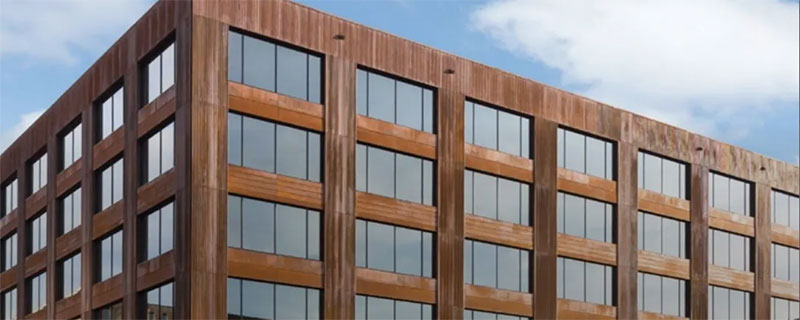Wood Technology, the Potential
credit: TCD
Researchers work to develop revolutionary wood technology with far-reaching implications for construction industry: ‘To replace carbon-intensive materials like concrete and steel’
The construction sector accounts for a huge amount of planet-overheating emissions, largely because of the processes for creating common building materials like concrete and steel. For that reason, some in the industry are looking toward wood as the potential construction material of the future.
Though wood is, of course, among the oldest construction materials on Earth, the technology around how to use it is still evolving to meet the needs of modern society. At Michigan Technological University, researchers are developing a new method of making timber suitable for large-scale construction projects, Inside Climate News reported.
Their research is focused on creating cross-laminated timber — an artificially produced construction material made with layers of wood and resin — out of hardwoods (such as maple, birch, and oak). Traditionally, mass timber has been made using softwoods (such as pine, spruce, and fir). Being able to use more types of wood in the process would open up new possibilities for the industry, the researchers said.
“I don’t think it is good to characterize it as competing with softwood. I see this just as a diversification of wood as a building material. The point is that we want to use all of the biobased material that we can to replace carbon-intensive materials like concrete and steel,” Mark Rudnicki, the director of the Hardwood Mass Timber Institute at Michigan Tech, said.
According to the United Nations Environmental Programme, the buildings and construction sector is responsible for a whopping 37% of all global planet-overheating pollution. That is a massive amount, and it is clear that the industry must change to meet climate goals laid out at the recent United Nations Climate Change Conference.
The next step for hardwood cross-laminated timber is to gain approval from the North American Manufacturing Standard, which should happen within the next few years.
“When approval comes, I think it will be good for the economy in the states where you have hardwood in the markets,” said Raju Pokharel, a professor of forest economics at MSU. “When there’s more demand the prices can go up a little bit, but I don’t think it will have much of an impact [on] wood prices.”
Elsewhere, researchers are also trying to figure out how to make concrete and steel less carbon-intensive through methods such as using the process to capture air pollution inside concrete, or completely overhauling the steel production process.
Soure: The Cool Down









Leave a Reply
Want to join the discussion?Feel free to contribute!